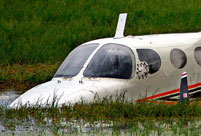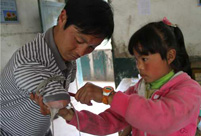IV. Cultural Preservation and Freedom of Religious Belief
As an important part of Chinese culture, Tibetan culture attracts people from all over the world with its unique charm. Over the years, the Central Government and the government of the Tibet Autonomous Region have worked together to preserve and promote the outstanding traditional Tibetan culture while developing advanced socialist culture, and to protect places of unique folk cultures. Their efforts have reaped fruits, and Tibetan culture is now well preserved and developed.
Preserving and developing the spoken and written Tibetan language
The study and use of the Tibetan language and script are protected by law in China. The Constitution, Law on Regional Ethnic Autonomy and Law on the Standard Spoken and Written Chinese Language have articles protecting the freedom of ethnic minorities to use and develop their own spoken and written languages. The Tibet Autonomous Region enacted the Several Provisions of the Tibet Autonomous Region on the Study, Use and Development of the Tibetan Language (For Trial Implementation), Detailed Rules for the Implementation of the Provisions, and the formal version, finally making this work solidly law-based.
Bilingual education, with Tibetan as the principal language, is widespread in Tibet. At present, primary schools in all farming and pastoral areas and some urban areas use both Tibetan and Chinese in teaching, but mostly Tibetan for the major courses. Middle schools also use both languages, and Tibetan classes in middle schools in inland areas also have lessons in Tibetan. By the end of 2012 there were 282,914 primary school students and 177,981 middle school students receiving bilingual education, accounting for 96.88 percent and 90.63 percent of the total respectively in Tibet. Now there are 23,085 bilingual teachers, and 3,700 Tibetan language teachers at schools at different levels.
Tibetan is widely used in political life. Resolutions, laws and regulations adopted at people's congresses at all levels, and formal documents and declarations published by people's governments at different levels and their subsidiary departments in Tibet are written in both Tibetan and Chinese. In judicial proceedings, Tibetan is used to try cases involving litigants of the Tibetan group; and the Tibetan language is used in writing the legal documents. Automation has been realized in the translation and interpretation departments of the Party Committee, People's Congress, People's Government and CPPCC office of the Tibet Autonomous Region, and such offices at prefecture and county levels. The word count of translation in Tibet is more than 60 million each year. Both Tibetan and Chinese are used in official seals, credentials and certificates, forms, envelopes and letter paper, writing paper, identifiers, signs of work units, factories and mines, schools, stations, airports, shops, hotels, restaurants, theaters, scenic spots, sports venues, libraries, and street and traffic signs.
【11】 【12】 【13】 【14】 【15】 【16】 【17】 【18】 【19】 【20】
【21】 【22】 【23】


 No news of survivors in Lao Airlines crash
No news of survivors in Lao Airlines crash Five fighters in flight training
Five fighters in flight training London mayor hails free trade, subway system on China tour
London mayor hails free trade, subway system on China tour Different eye catching shows at housing fairs in China
Different eye catching shows at housing fairs in China Chalk it up to great courage
Chalk it up to great courage Tibetan girl helps mobilize volunteers onlin
Tibetan girl helps mobilize volunteers onlin Lingerie show dazzles Wuhan Motor Show 2013
Lingerie show dazzles Wuhan Motor Show 2013  Chinese screen goddesses from Beijing Film Academy
Chinese screen goddesses from Beijing Film Academy  Weekly Sports Photos
Weekly Sports Photos Bayi Parachute Team of PLA Air Force
Bayi Parachute Team of PLA Air Force World has never been dark-- a blind kid’s life in Tibet
World has never been dark-- a blind kid’s life in Tibet Change to law may make it easier to sue polluters
Change to law may make it easier to sue polluters UNESCO world heritage site: Montale Tower
UNESCO world heritage site: Montale Tower U.S. Senate leader announces bipartisan deal
U.S. Senate leader announces bipartisan deal Fiber-optic wedding dress show shinning in Suzhou
Fiber-optic wedding dress show shinning in Suzhou Day|Week|Month